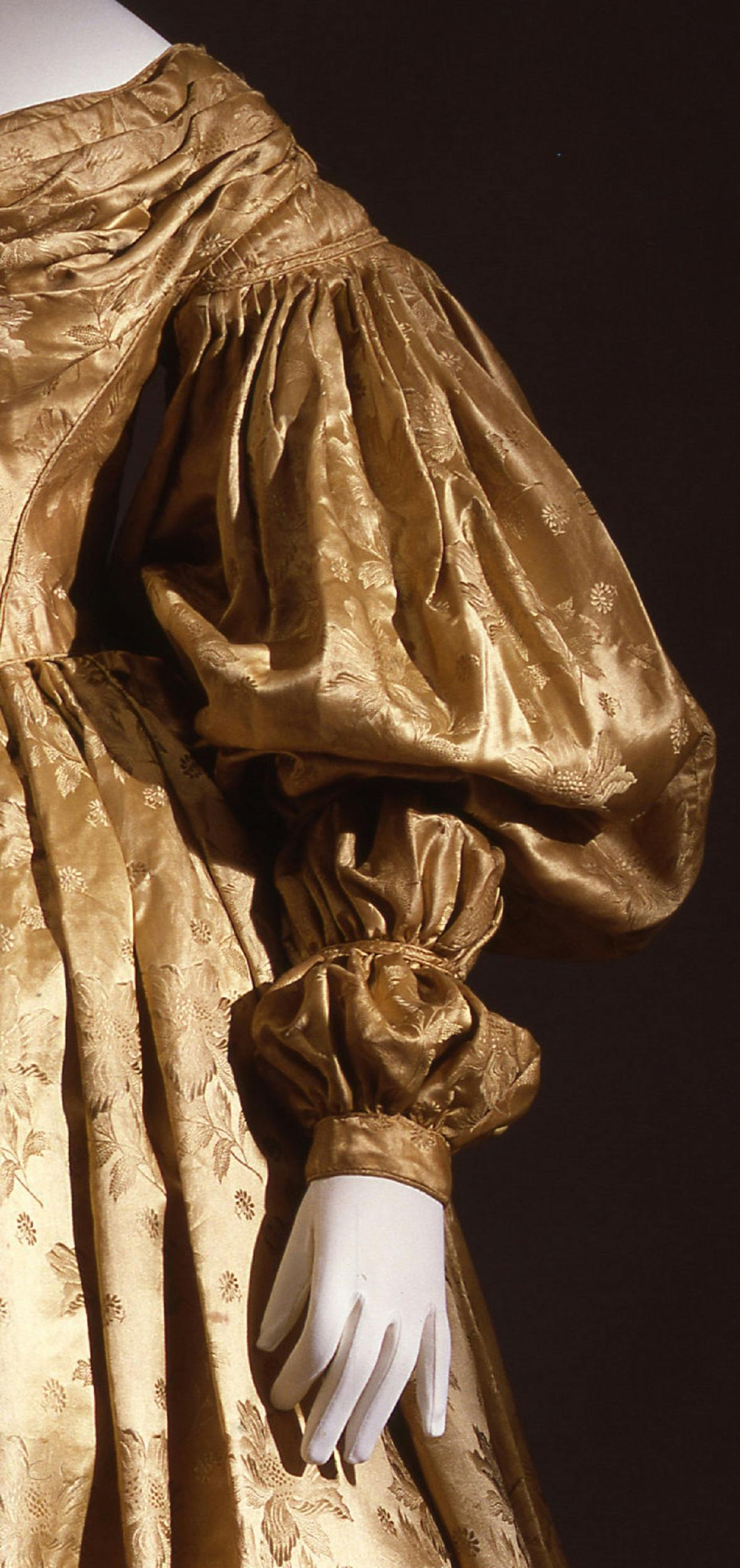Wedding dress
Italian production
This dress was made for Angela Polese, born in Livorno in 1808, who wore it at her wedding to Giuseppe Ascione in 1836.
At the time, although the use of white as an allusion to women's virginal whiteness was already common for bridal gowns, the use of colours such as antique gold and pale pink remained popular at least until the mid-19th century. Meanwhile, the wedding dress was increasingly establishing itself as a fundamental marker of the social prestige of a future wife who, through marriage, was able to gain a more solid position in society.
Made of textured silk fabric on an antique gold background, the dress is decorated with a floral motif of peonies and small daisies. The bodice, with trapezoidal shape, tightens at the waist following the figure of an arrow. Its lines are made more gentle thanks to the flowing pleats that horizontally cross the wide neckline to stop towards the centre.
The ‘à gigot’ sleeves, which are full at the humerus, become tight-fitting at the elbow by means of a double row of laces fastened with small buttons, narrowing significantly around the forearms. The skirt, which is internally lined with gauze, is ruffled at the waist. It increases its volume to form a sort of dome and descends with soft pleats down to the ankles.
The design of the dress reflects the sartorial canons typical of the period between the 1820s and 1830s. During those decades, the light and flowing fabrics of the Empire style gave way to dresses that tended to conceal the female form under heavy and increasingly constricting garments, but without neglecting a generous neckline.
The distinct trapezoidal shape of the bodices, together with the flared skirts, gave the female silhouette a characteristic hourglass shape, leaving the feet still uncovered and donating the woman a floating and light appearance.
The dress also included a canezou-pélerine that was typical of the Romantic period, a short cape made with the same fabric as the dress, embellished with silk lace and resting on the shoulders to emphasise the curved shape.
In the same way as figurative arts, also fashion reflected the contemporary eclectic trends of the period, with a rediscovery of stylistic motifs drawn from the past. An example of this is represented by the wide ‘à gigot’ sleeves of the dress, which were designed according to the typical late Renaissance style and reintroduced in French high society by the Duchess de Berry during the 1820s.
La Galleria del Costume/1 , Centro di, Firenze, 1983, pp. 64-65; M. Carmignani, Il mito intramontabile dell’abito da sposa , in C’era una volta il corredo da sposa , Consorzio Merletti di Burano, Burano, 1987, p. 193; S. Ricci, Le ore della moda: il codice borghese delle buone maniere , in La Galleria del Costume/5 , Centro di, Firenze, 1990, p. 13; C. Chiarelli, Abiti nella storia. Lo stile del vivere da Napoleone ai Demidoff , Sillabe, Livorno, 1998, pp. 7-19.
